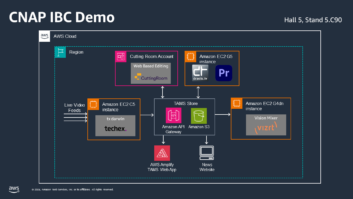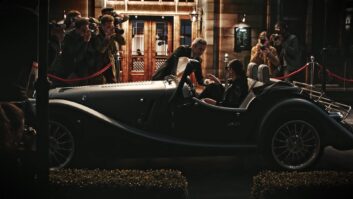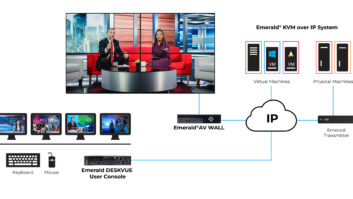Snowdonia (Eryri), a land of majestic peaks, high, silvery lakes and rich, rolling pasture could almost have been tailor made as the backdrop for HBO’s House of the Dragon, prequel to the world-conquering Game of Thrones. Visiting the region, maybe finding one of its forgotten castles or hidden valleys, it’s easy to imagine that fantastic creatures really do soar among the jagged mountains, great leathery wings spread wide as they flit from point to point.
Redefining possibility
For the team at Rodeo FX, turning imagination into reality is all in a day’s work. When three spectacular new dragons were needed for season two, they were perfectly placed to deliver. Moondancer, Vermax and Silverwing were integral characters in the continuing story. Just like their human counterparts, they, too, were shaped by their life experiences. Martin Pelletier, visual effects supervisor at Rodeo FX, oversaw their creation and gives an insight into the process behind it.

“The first step is understanding the storytelling point of each and every character,” he explains. “We had a meeting with the client where they presented us with concepts of their dragons – basically a simplified version. They also gave us a size reference next to a human being, to give us a good understanding of the scale. From there, we dove into a personality description.” Using Moondancer as an example, he continues. “Moondancer is a mid-size dragon in the series. He’s meant to be reckless, snappy and unpredictable. He’s a bit of a punk – he has the mohawk. It was a really good way of picturing how we were going to animate the character.”
The team then considers the types of actions that are required, such as soaring, diving, moving in a jerky way to reflect the dragon’s spiky personality. The mechanics of his movement are explored, “Do we have to collapse the wings, or keep them open – all these things have to be considered when we start building.” A skeleton is built up with muscle groups added before surfacing is applied. This takes into account the dragon’s past, how his life has been lived according to the story, all of it intended to ensure the character is plausible and convincing. “All of this combined ends up in maybe a four month process to build one creature from the ground up to a final beast that is going to be renderable in a shot.”

Highlighting the importance of this aspect of the work, Pelletier says that the past life of an object being created is sometimes underestimated in CGI and VFX. “We need to do the exercise when we build our assets, so that they really belong within the storytelling lines and don’t stand out in a bad way,” he says.
Turning reality into fantasy
Understanding the need for believability, the team uses as many real life reference points as possible. “With dragons, we’re kind of short on real life references,” Pelletier laughs, “so we try to figure out what does exist that would translate.” The wings, for example, have membranes that flex as the skin moves. To accomplish this, the team studied footage of bats in flight. The facial movements of komodo dragons and other lizards were also examined. “All these things are based on the closest things we can find in real life,” he continues, “that was the biggest challenge.”
Rodeo FX created around 230 shots for season two. Some 160 people worked on the project which took a little over eight months. Pelletier describes the technology required to breathe life into their creations.“Our two main tools for 3D creation are Maya and Houdini. Maya is used with ZBrush, to sculpt our final models. To create texture, we use Mari or Substance. Everything else is handled in Houdini: lighting effects, simulation, muscle definition is also being driven in Houdini. Final renders are done in Houdini using Arnold, and the final compositing of everything is combined and finalised in Nuke.”
Although AI is very much an industry buzzword, the technology was not extensively used by Rodeo FX. “AI is an interesting beast,” says Pelletier, before commenting that studios are sometimes reluctant to use it, perhaps because of concerns over privacy. “There are some grey zones,” he says, “some limitations. Studios want a heads-up on whatever AI tools or technology we are going to be using, to ensure we’re going to be safe playing with their content. It’s quite sensitive. We couldn’t go too wild and broad with AI – especially on this show.”

Aside from the creative elements, some AI solutions were used to handle repetitive work, effectively freeing up the team to concentrate on higher value tasks. “There’s a bunch of little AI tools [that we] used across the show that are not cloud-based and very secure, such as automated rotor work in Nuke [and] automated tracking in some instances,’ Pelletier explains. “It’s just speeding up the process of early assembly, and it gives us a bit of a head start without spending too much time and money – then we can finish using real artists to do the final work.”
Achieving believability has clearly been a driving force for Rodeo FX, and Pelletier is fulsome in his praise, both for the team and what they have managed to create and the actors who worked with them. “I think we have achieved something quite hard, which is giving an obvious and very distinct personality to Moondancer that was recognisable from the first few shots.” He refers to a sequence in which the creature flies over a forest, searching for hidden soldiers. “I think we’ve achieved some outstanding work making the sequence look like it was shot on a single day, though it wasn’t, for obvious reasons. And I think we managed to find a really good balance of realism, yet with a snappy action feel that is just on the fine line of looking not so real… I’m extremely happy with the outcome.”

All of the work was completed in Canada, where Rodeo FX have facilities in Quebec City and Toronto, as well as the main studio in Montreal. Pelletier did, however, travel to Wales to visit the client, see the location, set, soundstage and backlot. It was, he says, a useful experience, allowing team members to gain an understanding of the scale of the environment their creations would inhabit. “On many occasions, we go from aerial shots down to ground level and we needed to make sure the audience was able to orient themselves. This is where we’re at; this is the direction we’re looking at. It took us some time to figure out exactly how we’re going to be orienting and shaping things up. It’s always such a valuable moment for us,” he continues.
“Basically, what we’re trying to do is make sure there’s this absolutely seamless invisible line between the real set built and the CGI extension. We never want to steal the show in any kind of way. We need to complement what they’re shooting and creating.”
For anyone who has seen their work in House of the Dragon, it is immediately obvious that, in this, Martin Pelletier and the team from Rodeo FX have very much succeeded.






